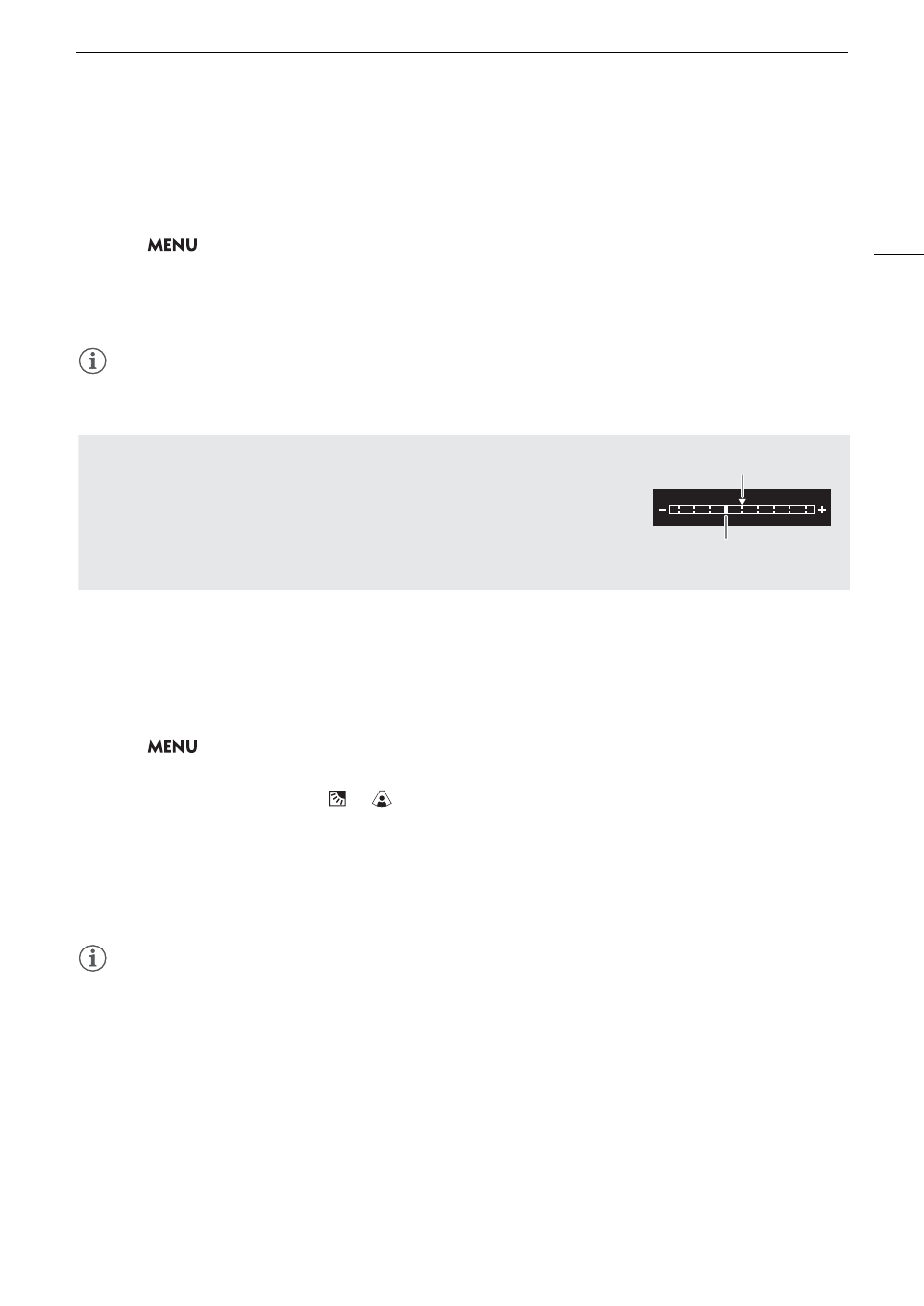Exposure compensation - ae shift, Light metering mode, Expo s ure compen s ation - ae shift – Canon EOS R5 C VR Creator Kit with RF 5.2mm f/2.8 Dual Fisheye Lens User Manual
Page 81

81
Aperture
Expo
s
ure Compen
s
ation - AE Shift
Use AE shift to compensate the exposure in order to darken or lighten the image.
You can also perform this function remotely using Browser Remote on a connected network device (
A
1
S
elect
> [
v
Camera
S
etup] > [AE
S
hift].
2
S
elect the de
s
ired option.
• The camera will attempt to adjust the exposure accordingly.
• You can select one of 17 AE shift levels from –2.0 to +2.0.
NOTES
NOTES
• If you set an assignable button to [AE Shift +] or [AE Shift –] (
A
121), you can press the button to adjust the
AE shift level.
Light Metering Mode
Select the light metering mode to match the recording conditions. Using the appropriate setting will help achieve
a more appropriate exposure level.
1
S
elect
> [
v
Camera
S
etup] > [Light Metering].
2
S
elect the de
s
ired option.
• The icon of the selected mode (
or
) appears on the screen.
Option
s
[Backlight]: Suitable
when
recording backlit scenes.
[Standard]:
Averages the light metered from the entire screen, giving more weight to the subject in the center.
[Spotlight]:
Use this option when recording a scene in which only a certain part of the picture is lit, for
example, when the subject is lit by a spotlight.
NOTES
NOTES
• If you set an assignable button to [Backlight] or [Spotlight] (
A
121), you can press the button to toggle
between the respective light metering mode and [Standard].
• Adjust the exposure again if you change the metering mode after adjusting the aperture manually.
The expo
s
ure bar
The
Î
on top of the exposure bar indicates optimal exposure without any shift
(AE±0); the scale markings indicate the deviation from optimal exposure in
1/2 EV increments. The indicator inside the exposure bar represents the current
exposure. When the difference between current and optimal exposure is larger
than ±2 EV, the indicator will flash at the edge of the exposure bar. Optimal
exposure will change depending on the light metering mode used.
Optimal exposure AE±0
Current exposure